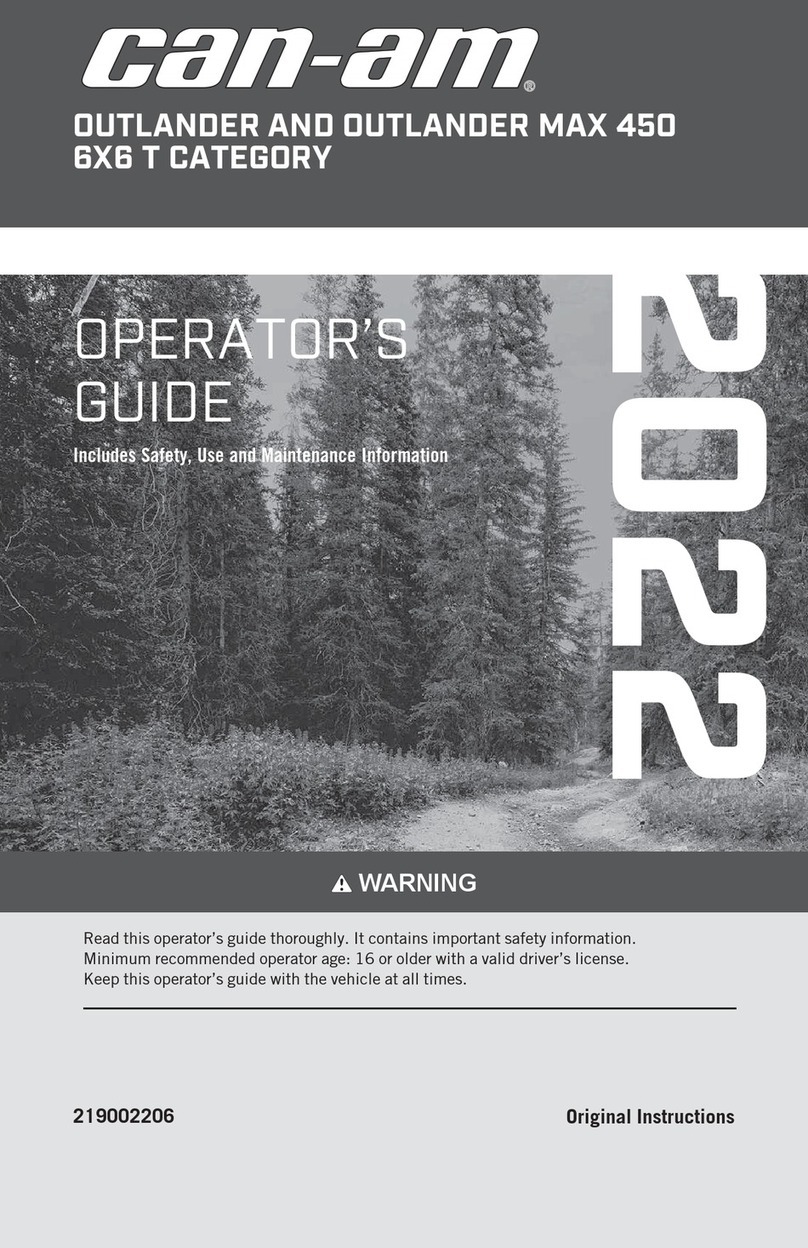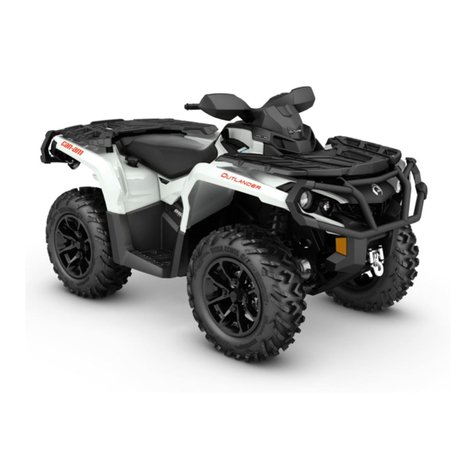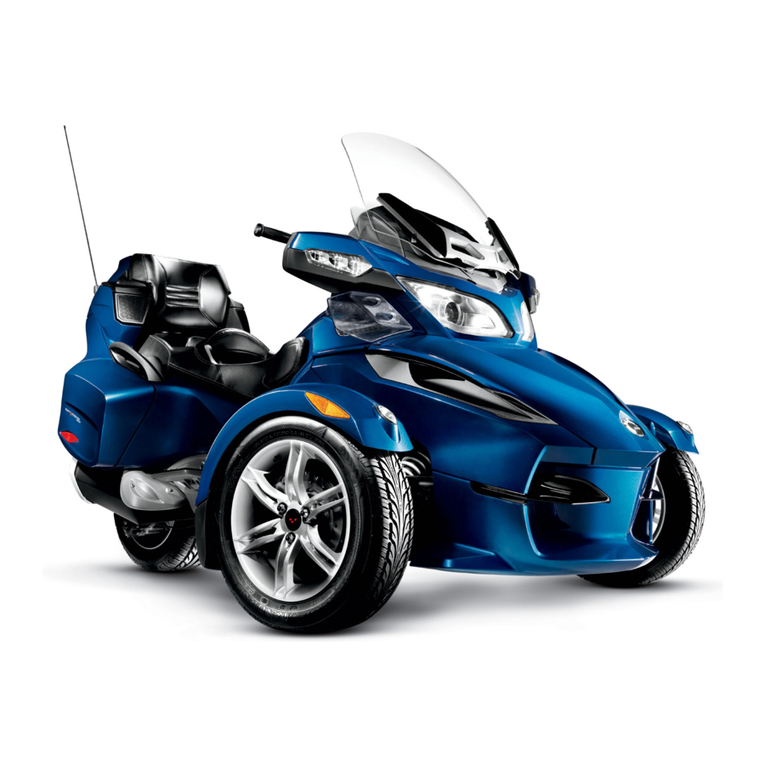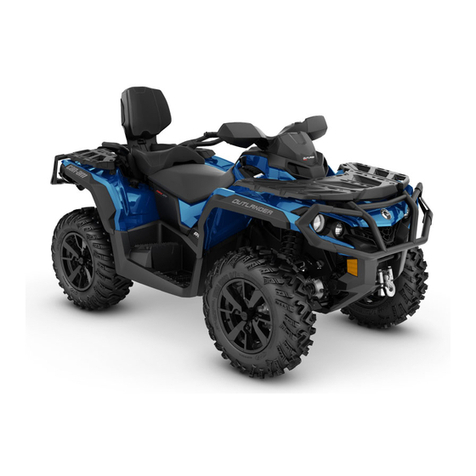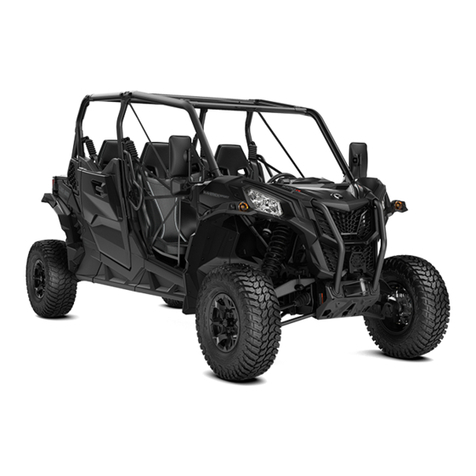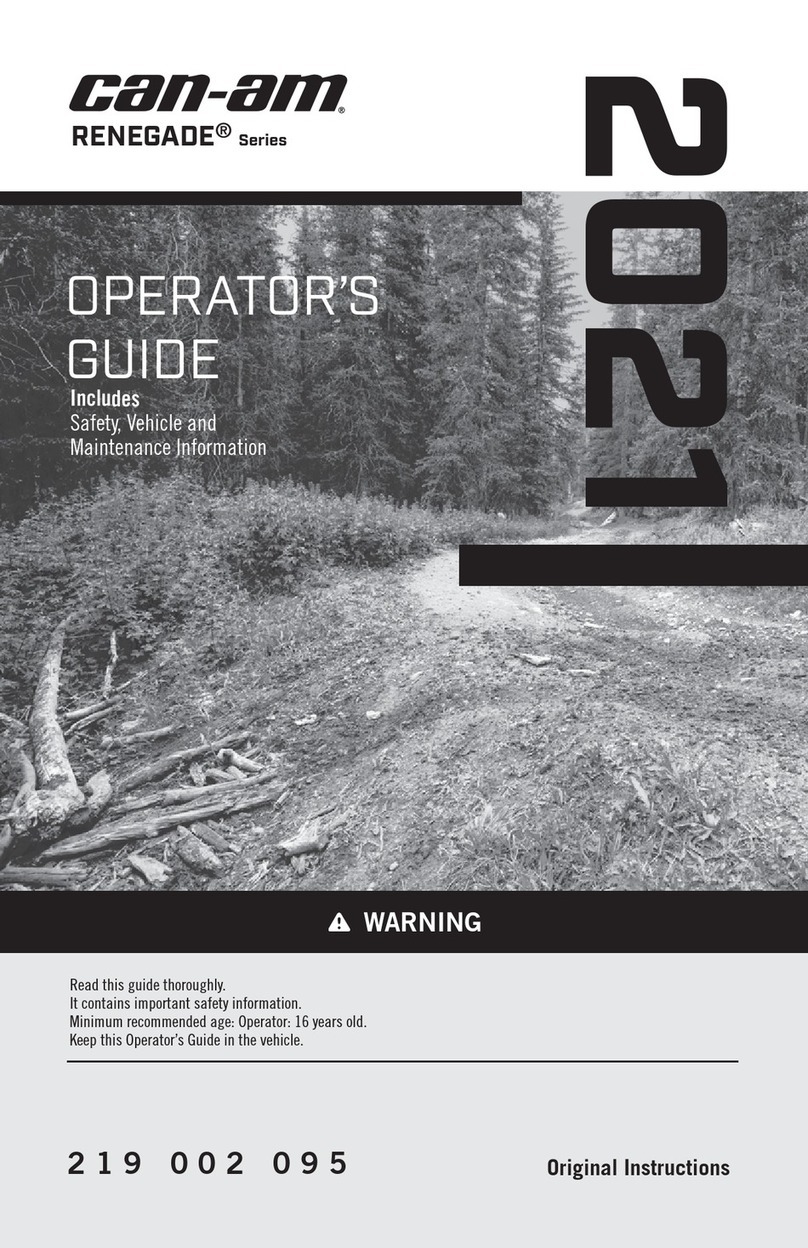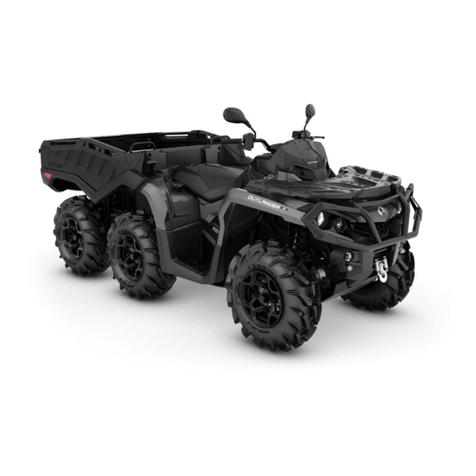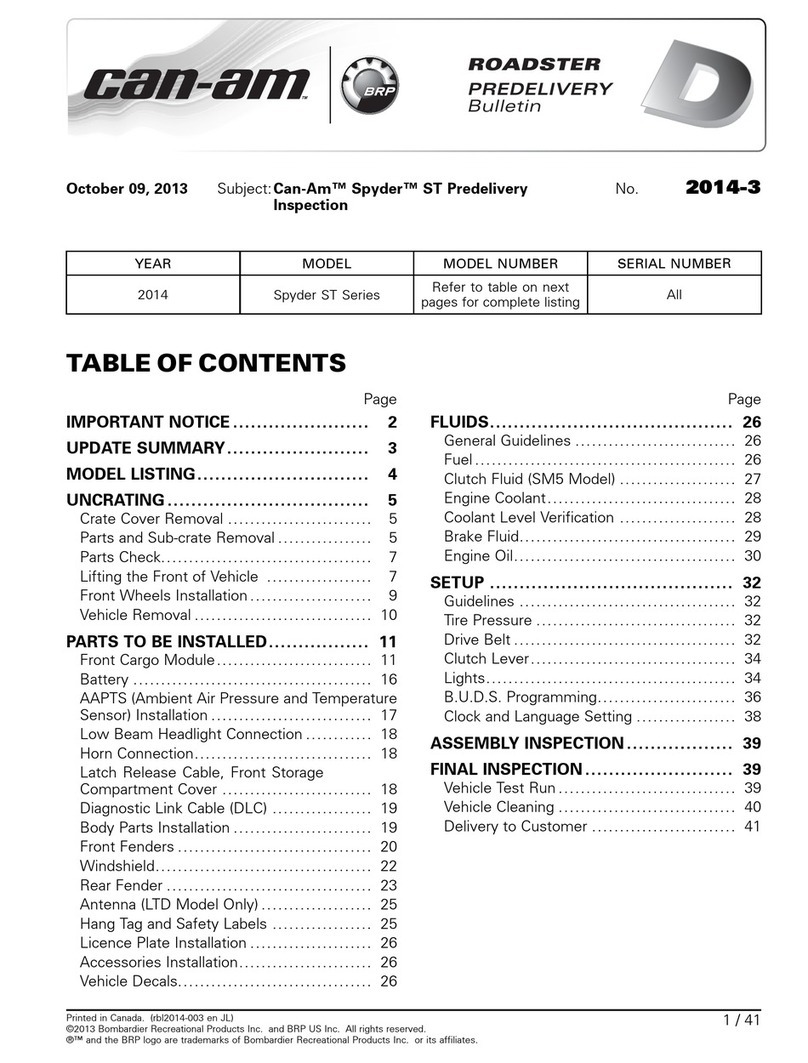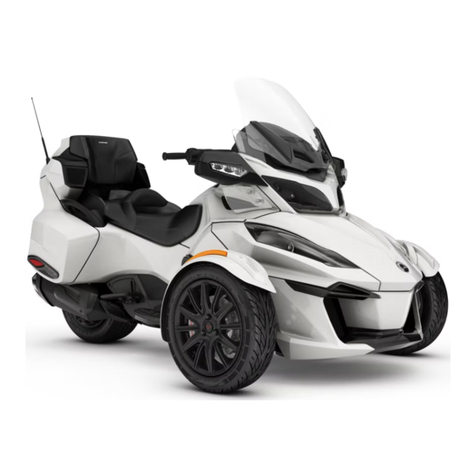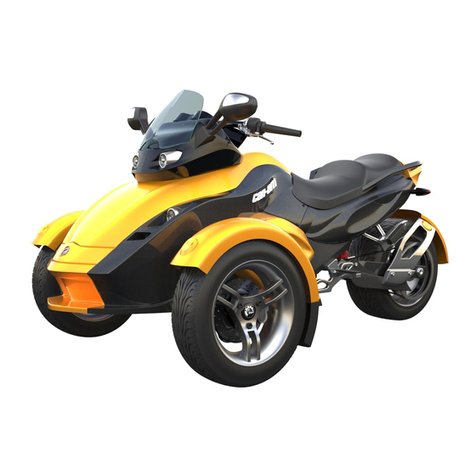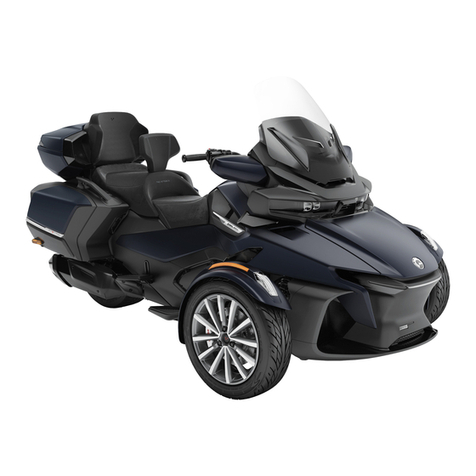
FOREWORD
At delivery, you were informed about
the warranty coverage and also, you
signed the
PREDELIVERY CHECK
LIST
to ensure your new vehicle was
prepared to your entire satisfaction.
Know Before you Go
For your safety and the safety of pas-
sengers and bystanders, read the fol-
lowing sections before you operate
this vehicle:
–
GENERAL PRECAUTIONS
–
VEHICLE INFORMATION
–
SAFE OPERATING INSTRUCTIONS
–
PRE-RIDE INSPECTION
.
Experienced motorcyclists should pay
special attention to the
WHAT'S DIF-
FERENT FROM OTHER VEHICLES
subsection.
Safety Messages
The types of safety messages, what
they look like and how they are used in
this guide are explained as follows:
The safety alert symbol indicates
a potential injury hazard.
WARNING
Indicates a potential hazard, if not
avoided, could result in serious in-
jury or death.
CAUTION Indicates a hazard
situation which, if not avoided,
could result in minor or moderate
injury.
NOTICE Indicates an instruction
which, if not followed, could se-
verely damage vehicle components
or other property.
About this Operator's
Guide
This Operator's Guide was written in
North America in a right-lane driving
environment. Please adapt your ap-
plication of these maneuvers to your
jurisdiction and rules of the road.
In this Operator's Guide, the word
motorcycle typically refers to a
two-wheeled motorcycle.
Keep this Operator's Guide in the front
storage compartment so that you can
refer to it for things such as mainte-
nance, troubleshooting and instructing
others.
If you want to view and/or print an ex-
tra copy of your Operator's Guide, sim-
ply visit the following website www.
operatorsguide.brp.com.
The informations contained in this doc-
ument are correct at the time of publi-
cation. BRP, however, maintains a pol-
icy of continuous improvement of its
products without imposing upon itself
any obligation to install them on prod-
ucts previously manufactured. Due
to late changes, some differences be-
tween the manufactured product and
the descriptions and/or specifications
in this guide may occur. BRP reserves
the right at any time to discontinue or
change specifications, designs, fea-
tures, models or equipment without
incurring any obligation upon itself.
This Operator's Guide should remain
with the vehicle when it is sold.
2_______________
